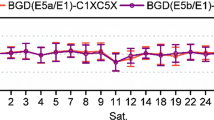Abstract
In this paper, the slant range error introduced by the “stop-and-go” assumption is analyzed in detail. Owing to the high orbit and long synthetic aperture time of geosynchronous SAR (Geo-SAR), the slant range error introduced by the “stop-and-go” assumption should be considered. In addition, an accurate signal propagation delay time equation of Geo-SAR based on circle orbit is presented, and the error of the “stop-andgo” assumption is demonstrated by simulation. An “equivalent position” model is proposed and validated by simulation. The error of various powers of “stop-and-go” slant range is analyzed using Legendre orthogonal series expansion. The limitation of the stop-and-so assumption is proved by point target simulation.
创新点
由于地球同步轨道SAR的超高轨道高度和超长合成孔径时间,使得低轨道SAR的成像方法不能完全适用于地球同步轨道SAR。本文分析了传统“stop-and-go”假设所引起的斜距误差对地球同步轨道SAR成像的影响,并提出了一种正圆轨道下的成像几何模型。基于此模型,找到了能用于成像的等效中点位置。利用legendre 正交级数展开,分析了"stop-and-go"假设所引起的斜距误差的具体形式。最后,通过点目标仿真,验证了"stop-and-go"假设的局限性和本文提出的模型的有效性。
Similar content being viewed by others
References
Tomiyasu K, Pacelli J L. Synthetic aperture radar imaging from an inclined geosynchronous orbit. IEEE Trans Geosci Remote Sens, 1983, 21: 324–329
Madsen S N, Edelstein W, DiDomenico L D. A geosynchronous synthetic aperture radar for tectonic mapping, disaster management and measurements of vegetation and soil moisture. In: Proceedings of IEEE International Conference on Geoscience and Remote Sensing Symposium (IGARSS), Sydney, 2001. 447–449
Madsen S N, Chen C, Edelstein W. Radar options for global earthquake monitoring. In: Proceedings of IEEE International Conference on Geoscience and Remote Sensing Symposium (IGARSS), Toronto, 2002. 1483–1485
Guarnieri A M, Tebaldini S, Rocca F, et al. GEMINI: geosynchronous sar for earth monitering by interferometry and imaging. In: Proceedings of IEEE International Conference on Geoscience and Remote Sensing Symposium (IGARSS), Munich, 2012. 210–213
Barber B C. Theory of digital imaging from orbital synthetic aperture radar. Int J Rem Sens, 1985, 6: 1009–1057
Raney R K. Doppler properties of radars in circular orbits. Intern J Remote Sens, 1986, 7: 1153–1162
Prats-Iraola P, Scheiber R. High precision SAR focusing of TerraSAR-X experimental staring spotlight data. In: Proceedings of IEEE International Conference on Geoscience and Remote Sensing Symposium (IGARSS), Munich, 2012. 3576–3579
Liu Y, Xing M D, Sun G C. Echo model analysis and imaging algorithm for high-resulution SAR on high-speed platform. IEEE Trans Geosci Remote Sens, 2012, 50: 634–646
Hu C, Long T, Zeng T, et al. The accurate focusing and resolution analysis method in geosynchronous SAR. IEEE Trans Geosci Remote Sens, 2011, 49: 634–646
Zhao B J, Qi X Y, Song H J. The accurate fourth-order doppler parameters calculation and analysis for geosynchronous SAR. In: Proceedings of European Conference on Synthetic Aperture Radar (EUSAR), Nuremberg, 2012. 615–618
Huang L J, Hu D H, Ding C B, et al. A general two-dimensional spectrum based on polynomial range model for medium-earth-orbit synthetic aperture radar signal processing. In: Proceedings of ICSPS, Dalian, 2010, 3: 662–665
Huang L J. The study of Medium-earth-orbit SAR iamging algorithm. Dissertation for the Doctoral Degree. Beijing: Institute of Electronics, Chinese Academy of Sciences, 2011
Eldhuset K. A new fourth-order processing algorithm for spaceborne SAR. IEEE Trans Aerosp Electron Syst, 1998, 34: 824–835
Author information
Authors and Affiliations
Corresponding author
Rights and permissions
About this article
Cite this article
Tian, Y., Guo, S. & Yu, W. “Stop-and-go” error analysis of geosynchronous SAR. Sci. China Inf. Sci. 59, 062306 (2016). https://doi.org/10.1007/s11432-015-5388-5
Received:
Accepted:
Published:
DOI: https://doi.org/10.1007/s11432-015-5388-5
Keywords
- geosynchronous SAR
- stop-and-go assumption
- equivalent position model
- Legendre orthogonal series
- error analysis




